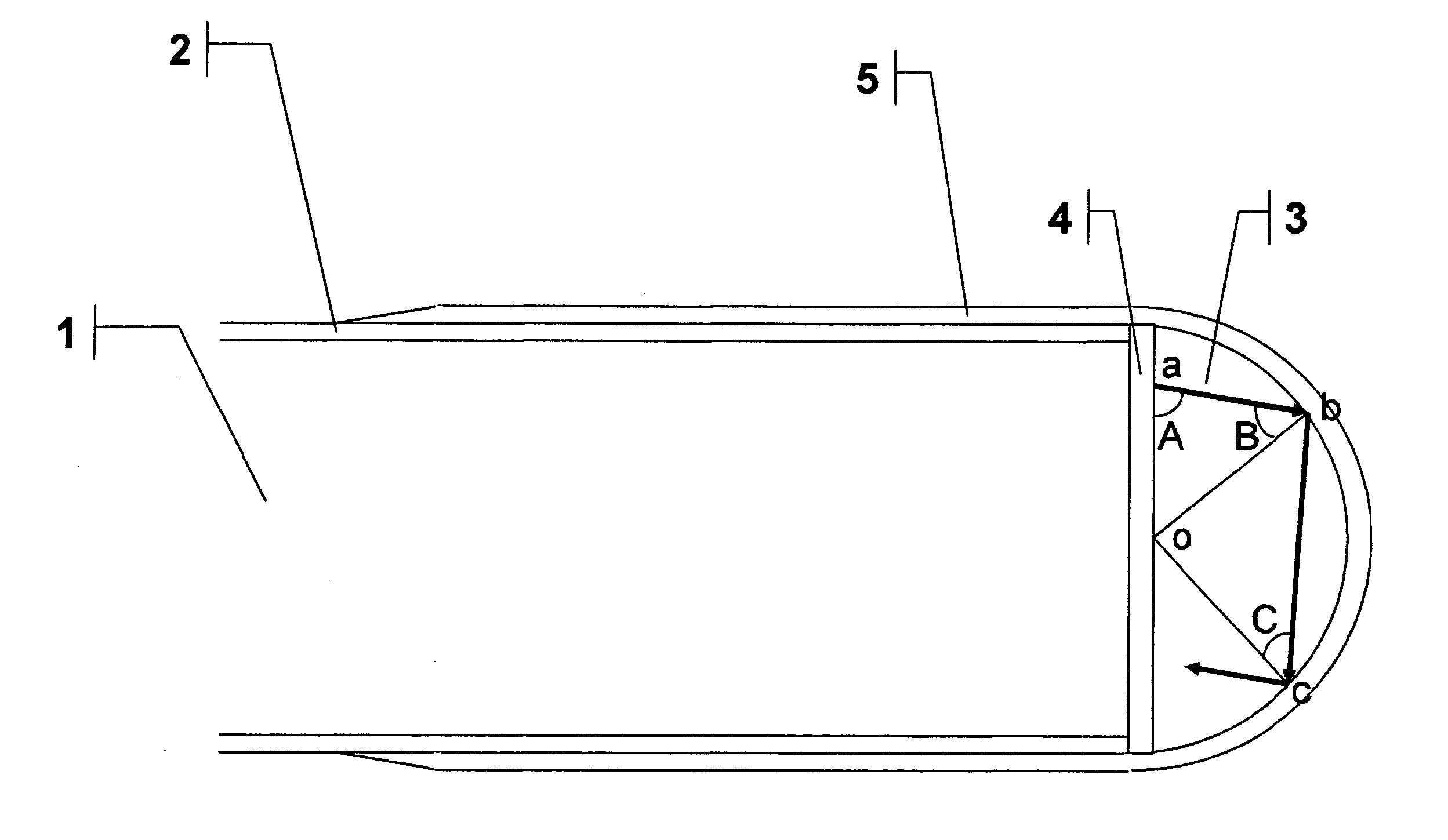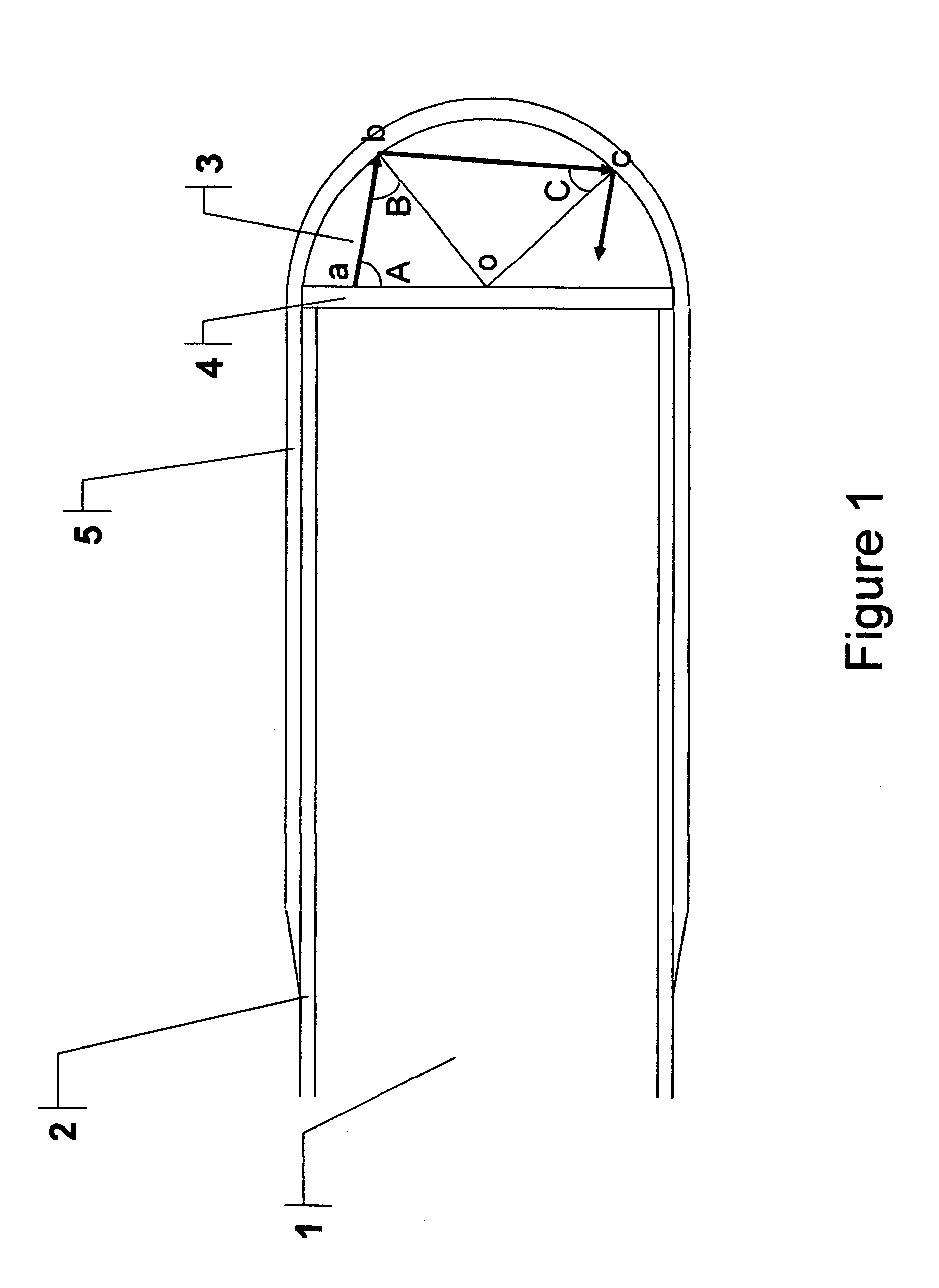Fiber optic temperature sensing system using a hemispherical phosphor
a temperature sensing system and fiber optic technology, applied in the field of temperature sensing, can solve the problems of preventing the efficient utilization of excitation light, affecting the efficiency of excitation light, and mechanical stability of construction, and achieves enhanced fluorescence signal, enhanced absorption, and enhanced fluorescence signal.
- Summary
- Abstract
- Description
- Claims
- Application Information
AI Technical Summary
Benefits of technology
Problems solved by technology
Method used
Image
Examples
Embodiment Construction
[0015]A preferred way of fabricating the hemispherical phosphor is to start with a microsphere having a radius approximately equal to that of the fiber to which it is to be attached. It is then polished until approximately half is left. It should be clear to those versed in the art that hemispherical phosphors with the same radius can be fabricated in batches in this fashion.
[0016]With the phosphor lying on a flat surface with its curved side facing up, it can be picked up by a suction capillary tube. The tube is then oriented so that the end holding the phosphor is pointing up, and the vacuum is turned off. Next the polished end of an optical fiber is dipped in a liquid, held with the wetted end facing down, centered directly above the flat side of the phosphor, and lowered to make contact with the phosphor. Provided the liquid wets both the fiber and the phosphor, the phosphor will be held to the fiber at least temporarily. This bond needs only to be strong enough so that the phos...
PUM
| Property | Measurement | Unit |
|---|---|---|
| fluorescence | aaaaa | aaaaa |
| radius | aaaaa | aaaaa |
| length | aaaaa | aaaaa |
Abstract
Description
Claims
Application Information
 Login to View More
Login to View More - R&D
- Intellectual Property
- Life Sciences
- Materials
- Tech Scout
- Unparalleled Data Quality
- Higher Quality Content
- 60% Fewer Hallucinations
Browse by: Latest US Patents, China's latest patents, Technical Efficacy Thesaurus, Application Domain, Technology Topic, Popular Technical Reports.
© 2025 PatSnap. All rights reserved.Legal|Privacy policy|Modern Slavery Act Transparency Statement|Sitemap|About US| Contact US: help@patsnap.com



